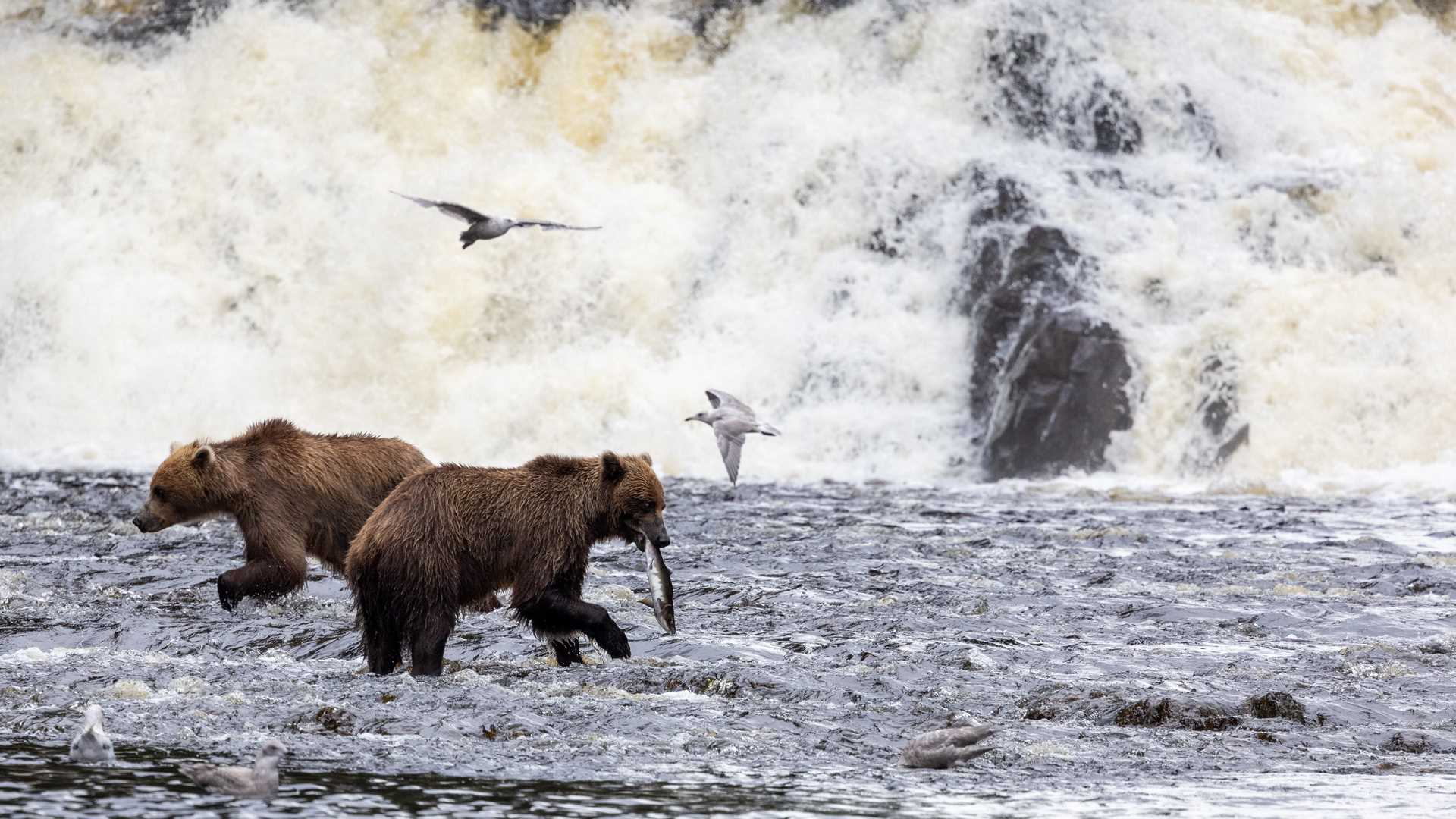National Geographic Quest sailed out of Glacier Bay National Park, passed over Icy Strait, and down into Chatham Strait through a night of cloudy skies. A high-pressure front enveloped the region, bringing the crisper temperatures of late summer. When dawn broke we were gliding across the calm, protected waters of Chatham Strait, a large fjord that connects the northernmost reaches of the Inside Passage with the southern reaches of the Alexander Archipelago.
We spent the morning cruising known humpback whale feeding areas. From the bow, we passed migrating phalaropes and kittiwakes, which bounced buoyantly in flight. The best strategy for finding whales is to scan the horizon for the tall, columnar blows. These exhalations of air and water spray well above the surface and can be seen from great distances, especially with the aid of binoculars. Staff stood dutifully on the bow and at the bridge, scanning the water for activity. Finally, a group of humpbacks was seen from miles away, and National Geographic Quest set a course to observe them.
Guests and naturalists poured onto the bow from their rooms and the lounge, watching with wonder as we closed the distance between us and the cetaceans. We approached within several hundred feet, respectfully keeping a distance that the whales might be comfortable with. About ten whales could be seen, with most of them moving in tandem as a tight group. Many of them were engaging in a unique and elaborate strategy known as bubble-net feeding. Only some humpbacks employ this technique, and it is a spectacle to observe. Whales first detect a large group of schooling fish. The whales dive below the school, and one begins circling while blowing bubbles. Another whale may also circle, singing in the direction of the school. As the bubbles rise to the surface, the fish are corralled into tight circles. Once the school has been tightly concentrated, the whales move in synchrony up the column toward the surface; with mouths ajar, they lunge into the schools of fish. We saw up to seven of these whales surface in unison. Each time, those on the bow cheered and watched curiously while naturalists interpreted the story unfolding in front of us.
Satisfied with these amazing observations, we returned north toward Chichagof Island, anchoring in a protected cove called Pavlov Harbor. We came here to search for brown bears feeding by a cascade near the harbor. Following lunch, groups grabbed their gear and donned rainwear to spend over an hour monitoring the cascades for bear activity. Bears are attracted to this area because of the salmon traveling upstream to spawn. We visited the stream by Zodiacs; the mouth empties into a large bay just downstream of a cascade where salmon congregate. Indeed, multiple coastal brown bears were attracted to the high volumes of salmon. A mother with two larger cubs born in the spring of 2022 waded through, occasionally catching a salmon in shallow water. Shortly after, solo adults came by, and finally a large sow with three dark “spring cubs” (cubs that were born the previous spring). Both rounds of Zodiac visits to Pavlov Harbor were rewarded with multiple brown bear families, with as many as eight bears visible at one time. We also observed gulls, a great blue heron, ravens, crows, and two belted kingfishers. The kingfishers wowed many of the guests as they took turns chasing each other away from preferred perches.
August is a superb time of year to visit this region of the Pacific Northwest coastline, where salmon still have open wilderness to roam the streams and oceans.







